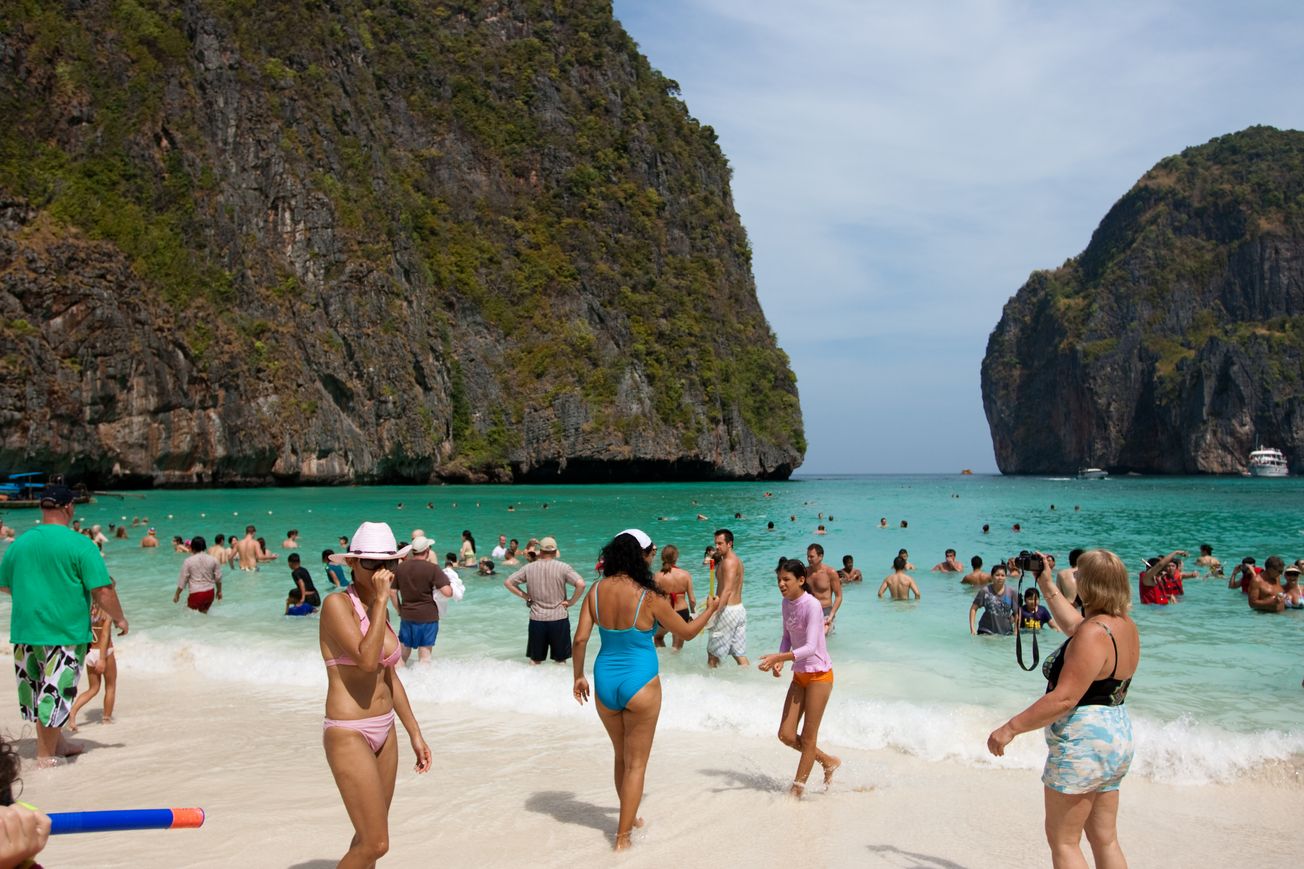By Charlie Campbell 4th year French and Spanish
Charlie Campbell discuses the detrimental environmental impacts that can happen to a location when they have a starring role.
Situated on the Thai island of Ko Phi Phi Leh, the white sand beach and opalescent waters of Maya Bay may seem all too familiar if you are acquainted with Danny Boyle’s hit film The Beach released in 2000. Starring a youthful Leonardo DiCaprio, the thriller depicted the location as a heavenly panoramic paradise. Yet at the time of production, concern was raised regarding the detrimental effect of filming on the island’s fragile ecosystem. Unfortunately, almost two decades on, Ko Phi Phi Leh still bears the scars of environmental degradation. In fact, in light of news surfaced this week, it is apparent the island has deteriorated further.
In the eighteen years since the film’s release, Ko Phi Phi Leh has seen a dramatic surge in tourism. Maya Bay’s tiny stretch of beach, only 200m long, is visited on average by 200 boats and 4000 tourists a day. The figures speak for themselves; Maya Bay is experiencing the cruel consequences of over-tourism in its most injurious form.

Image: Siva Dayalan / Flickr
To put it frankly, both the tourism industry and the holidaymakers themselves are to blame, their blatant disrespect towards the sanctity and delicate nature of their surroundings in turn making them responsible for its degradation. Whether it’s the litter left strewn on the beach, the remnants of sun-cream floating in the waters or the pollution caused by the day-trip boats, irresponsible tourism is evident at every turn.
What is even more alarming is the environmental degradation invisible to the naked eye, that is, the damage occurring on the seabed. Local authorities have predicted that a mammoth 80% of the coral reef surrounding Ko Phi Phi Leh has been destroyed as a direct consequence of excessive tourist action, a devastating loss for the area’s marine ecosystem.
With a visitor fee equating to around £10, one would think this was incentive enough to dissuade vacationers from polluting the ecological bliss that is Maya Bay. Regrettably, this has not proved sufficient, and so the DNP, Thailand’s Department of National Parks, Wildlife and Conservation, has had to take drastic, but praiseworthy steps.
As of June 2018, Maya Bay was temporarily closed to the public, and it has just been announced that this closure will be extended indefinitely, allowing the bay to fully recover and for natural harmony to be restored. This decision has been viewed as a huge success in the eyes of local environmental campaigners, demonstrating the prioritizing of the environment over the lucrative tourism industry.
Whilst it may not be too late to reverse the damaging effects of pollution and mass tourism on Maya Bay, countless other case studies exist whereby ecosystems are left to fall into environmental disrepair, often at the hands of irresponsible tourism. As a parting note, next time you consider travelling, think twice about visiting a so-called popular natural haven such as Ko Phi Phi Leh at the expense of its ecosystem. Or, at least choose a location that promotes tourism through a narrative of sustainability and environmental precedence.
Featured image: Flickr / weenie dog









